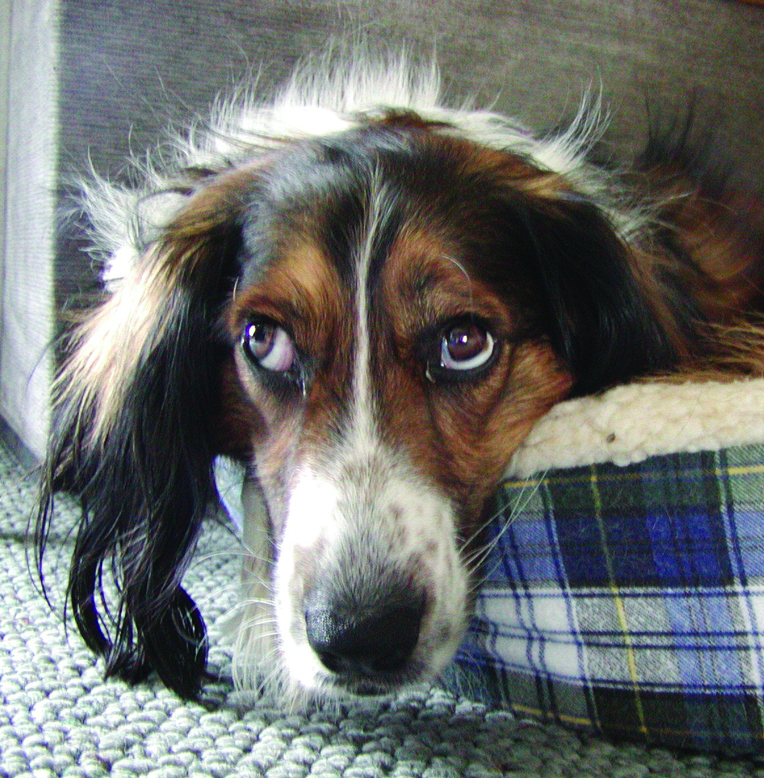Mange…think about it enough times and I am sure you will start to itch at the mere mention of the word! It is neither a pleasant thought nor a pleasant disease to suffer from. Sadly it is more common than you may realise. Often it is only associated with unclean, unloved dogs, but this stigma is actually a fallacy. In fact mange can strike any dog no matter what background, with even the Queen’s corgis being at risk!
There are however, a few circumstances that seem to make some animals more prone to this disease than others…
What is Mange?
Mange is caused by tiny parasites known as mites, of which there are three main types within the UK: Sarcoptes, Cheyletiella and Demodectes.
Sarcoptic Mange in Dogs
Sarcoptic Mange can also be known by the name “Scabiesâ€. It is a highly contagious mite and is often picked up from places where lots of dogs congregate, for example boarding or rehoming kennels, parks and groomers. The mites prefer to invade areas with little hair cover, so you tend to see the first signs around the belly, chest, tips of ears, armpits and elbows. If left, the disease can spread to eventually cover the whole body.
Sarcoptic mites burrow deep into the skin, releasing a highly irritating substance as they go. This leads to intense, all-consuming itching, hair loss, crusting and sores ultimately causing inappetence, weight loss, depression and irritability, often displayed as aggression. It is a severely debilitating disease and treatment should always be sought as early as possible.

Importantly, Sarcoptic Mange is contagious not only to other animals with contact to the pet, but also to humans as well.
Cheyletiellosis in Dogs
Cheyletiellosis is also a very contagious form of mange, contracted through close contact with an infected animal. It tends to be picked up from areas many dogs are in contact, such as boarding or rehoming kennels, parks or groomers. It can cause a mild form in humans as well.
Cheyletiellosis is often referred to as “Walking Dandruffâ€, so called due to a classic tell-tale sign. The mites live on the surface of the skin and tend to cause an appearance of bad scurf, mainly over the head, neck and back. If flakes of this dandruff are brushed onto dark card, they can often be seen to move, or “walk†due to the mites clinging to the flakes = walking dandruff. This form of mange does not tend to cause an intense itch and is mostly seen in youngsters.
Demodectic Mange in Dogs
This is by far the most common form of mange in dogs. It is not contagious to other dogs or humans, being seen mostly in juveniles.
The demodex mite is found on the skin of most normal animals, inclusive of humans. Typically they do not cause any problems, being present in extremely low numbers. However in some circumstances, believed to be through stress, illness or malnourishment, the mites overwhelm the immature immune system of the juvenile dog and demodectic mange is seen. This is complicated by the fact demodex in large numbers is thought to suppress the bodies natural immune system, setting up a vicious circle.
Typical signs include fur loss, scaling and reddened skin around the eyes, on the paws, ears and edges of mouth. These patches do not tend to be initially itchy. If left, patches can start to appear on other areas of the body, eventually spreading to be all encompassing. Secondary bacterial infections are quite a common complication due to the mites multiplying in hair follicles.
Demodectic mange is thought to have a heritable component as some breeds are more affected than others. Those at risk include Staffordshire bull terriers, boxer dogs, bulldogs, Dobermans and Alaskan malamutes. Due to this, it is recommended any sufferers of demodectic mange are not bred from.
Diagnosis and Treatment
Due to the debilitating nature of the disease, veterinary attention should be sought for any animal suspected of suffering from mange.
Vets will usually perform a skin scrape to try to gain a diagnosis. This involves gently scraping an area of skin affected in order to remove some surface layers to view under a microscope. If mites are within the sample, they can be easily detected, with their appearance telling the vet exactly what type of mange the animal is suffering from. A negative skin scrape however, does not rule out mange – it could simply be the mites are difficult to detect. In that case treatment is often based on history and presenting symptoms.
Treatment often involves the use of special shampoos which kill the mites, alongside antibiotics if required for secondary infections and general supportive care. Treatment time can be lengthy and full compliance is needed in order to rid your pet of mange. The good news is with prompt veterinary treatment the prognosis is generally good for animals suffering from mange, with most hair loss coming back in time.
So as you can see, mange is not just a disease that can affect a dirty, uncared for dog, – even the most pampered of pooches is at risk. But just remember if you see the signs, act fast. In this type of disease a vets help is the best help.
While pets suffering from mange will benefit from antibiotics and veterinary care, NorClear Shampoo can help pets with dry and flaky skin by maintaining a good condition of the animal’s skin and coat with weekly usage. Helping to maintain a healthy coat and skin can also be achieved with NorCoat – just spray the recommended amount on your pet’s food to release this food supplement full of essential fatty acids, perfect for a healthy looking pet.
